Search Images
Browse Content (p. 1688)
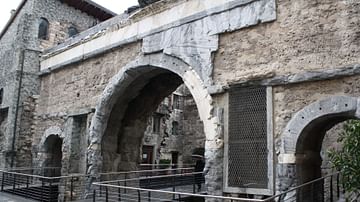
Image
Porta Praetoria, Aosta
One of the gates of the 25 BCE double Praetorian Gate of Aosta in northern Italy. The two gates stand 12 m apart and each has three arched entrances - one central gateway for wheeled vehicles and two smaller passages positioned either side...
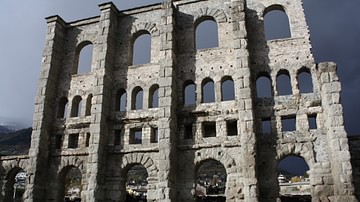
Image
Roman Theatre Façade, Aosta
The 22 m high façade (scaena) of the Roman theatre at Aosta in northern Italy. The theatre was constructed in the 1st century CE and further extended in the 3rd century CE. The theatre had a capacity of 3-4,000 spectators.
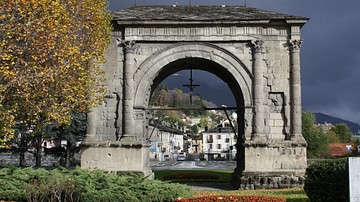
Image
Arch of Augustus, Aosta
The Triumphal Arch known as the Arch of Augustus in Aosta, northern Italy. The arch was erected in the reign of Augustus in 25 BCE to honour the emperor and his victory over the Salssi. The central iron crucifix and roof are more modern additions...
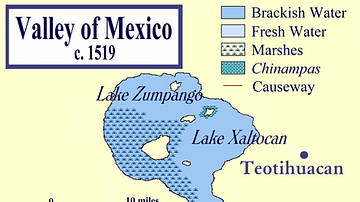
Image
Lake Texcoco
A map of Lake Texcoco and the Valley of Mexico indicating the principal settlements c. 1519 CE, including the Aztec Triple Alliance cities of Tenochtitlan, Texcoco and Tlacopan.
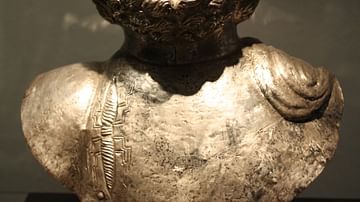
Image
Bust of Jupiter Graius
A silver plate bust of Jupiter Graius with lightning engraved on the armour. 2nd-3rd century CE, La Thuile, North Italy. (Archaeological Museum, Aosta).
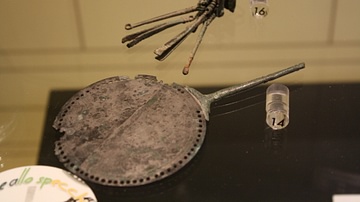
Image
Roman Cosmetic Kit
A Roman cosmetic toolkit in bronze with two tweezers and two spoon-headed instruments (specilli) and a mirror also in bronze with (originally) a polished silver face. The toolkit is of unknown provenance whilst the mirror is 1st century CE...
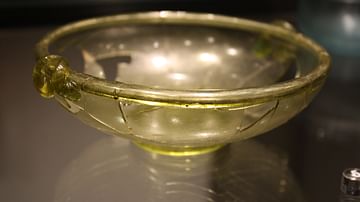
Image
Roman Yellow Glass Bowl, Aosta
A 1st century CE Roman blown glass bowl with added 'omega' handles. From the western cemetery of Aosta, North Italy. (Archaeological Museum, Aosta)

Image
Roman Abacus
A 1st century CE bronze portable abacus, part of a Roman scribe's kit. From St. Martin-de-Corléans Cemetery, Aosta, North Italy. (Archaeological Museum, Aosta)
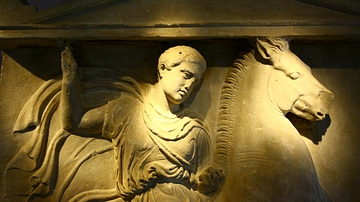
Image
Dexileos Stele (detail)
Detail of the Dexileos Stele. Visible are the holes where metal attachments would have been placed. On his leg a sword; in his right hand a spear; in his left hand the horse's reigns; and on his head, most likely a wide-brimmed hat, the petasos...
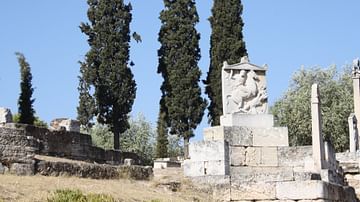
Image
Dexileos Stele
Dexileos Stele replica in situ, Dipylon Cemetery, Athens. (Original in the Kerameikos Museum, P 1130, c. 394 BCE)